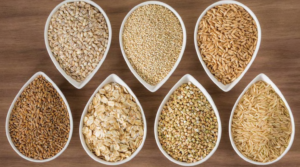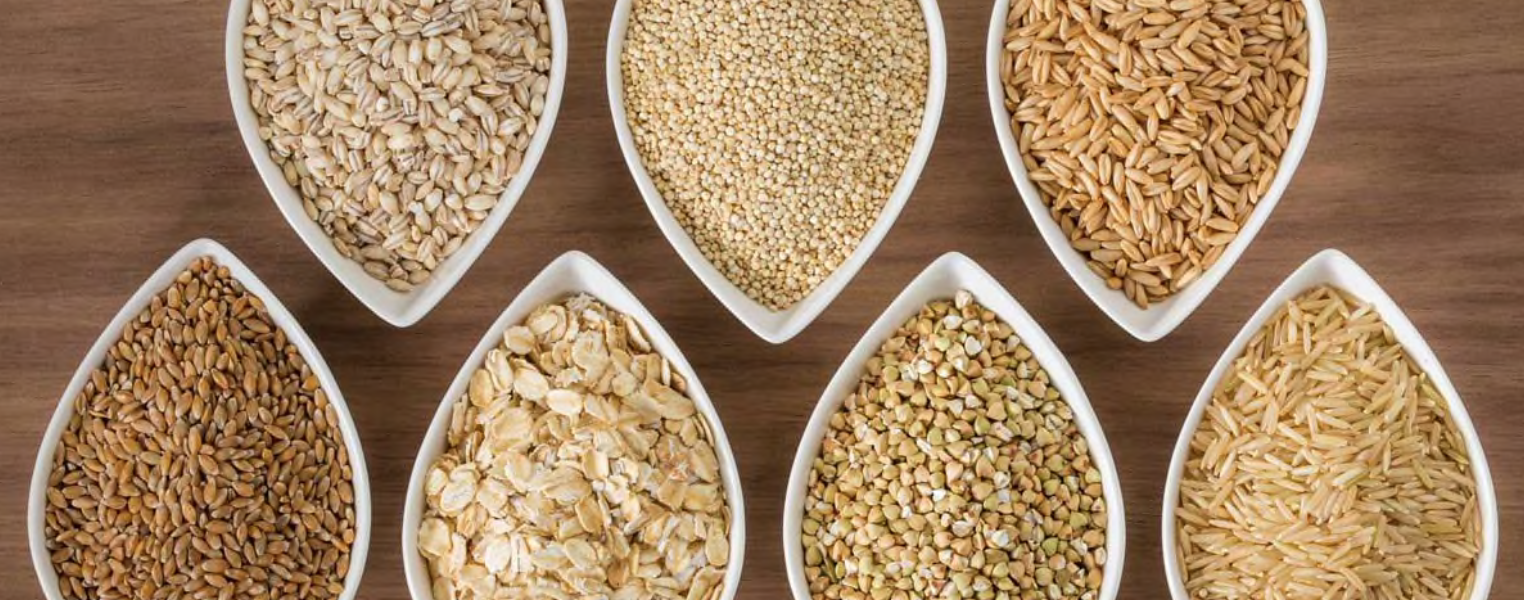◆ Whole grains
By Shelley Balls, MDA, RD, LD
UW Extension – Nutrition and Food Safety Educator

Grains are either whole or refined, and there is a big difference between the two when it comes to nutrition.
Whole grains contain all three parts of the kernel, which includes the bran, endosperm, and germ.
Refined grains have been processed, and in doing so this removes the bran and germ from the kernel. The bran and germ contain the dietary fiber, iron, healthy fats, phytochemicals and antioxidants.
Typically refined grains are enriched to add iron, and some B vitamins back into the product, but the other nutrients that were removed are not added back in, making them less nutrient dense than whole grains.
Grains can also be fortified with certain nutrients, which means that nutrients are added to the food, rather than replacing the removed nutrients.
The United States Department of Agriculture (USDA) Dietary Guidelines recommends that we make at least half of our grains whole grains. Whole grain examples include: brown rice, whole wheat bread products, millet, whole grain cereals, oats, barley, corn, quinoa, whole grain pastas, amaranth, etc.
The recommended servings per day of grains for a 2,000 calorie diet is six ounces. An ounce equivalent of grain varies in size depending on what product you have.
For example, 1 slice of bread, 1 cup of ready-to-eat cereal, ½ cup cooked rice, pasta, or cooked cereal are all one ounce equivalents. So the USDA Dietary Guidelines recommend that at least three of your six ounces of grains are whole grains.
You may find package labels on grain products with statements like “made with whole grains,” but this doesn’t necessarily mean that it is a 100% whole grain product. Although these products may not be 100% whole grain, they can still help individuals reach their whole grain intake.
Some grain products have caramel coloring to make them look like a whole grain, so it’s important to read the nutrition facts label. If you’re not sure if your grains are whole or not, check the ingredients list to see if whole grain is the first ingredient or second after water.
 Nutritional Benefits
Nutritional Benefits
Dietary Fiber that is found in whole grains can help lower blood cholesterol levels. Dietary fiber also aids in digestion and increases transit time, which can help prevent constipation and promote proper bowel function. Refined grains, are more likely to cause sharp spikes in blood sugar levels, and can increase your risk for type 2 diabetes. Whole grains in contrast help maintain a steady blood sugar. Dietary fiber also helps us feel full faster and helps us stay full for longer. Grains in general have received a bad reputation when it comes weight, but whole grains can help you reach and maintain a healthy weight.
Healthy fats such as poly- and monounsaturated fat are found in the germ of the whole grain kernel. Whole grains provide essential fats that the body cannot produce itself. Since the germ is removed in the processing of refined grains, they are more shelf stable than whole grains, but they don’t contain the same nutritional benefits. Healthy fats have been shown to lower bad cholesterol and triglycerides levels. Healthy fats can also lower the risk of cardiovascular disease.
Whole grains contain phytochemicals, which include antioxidants. The consumption of these nutrients can help reduce oxidative damage from free radicals and provide health benefits such as a decrease in certain chronic diseases. Refined grains do not contain these beneficial nutrients.
In summary there are a lot of great benefits of introducing whole grains into your diet, if you’re not doing so already. Making at least half of your grains whole grains may improve your health. If you are going to start adding whole grains into your diet, do so slowly, as the rapid increase in dietary fiber may cause digestive discomfort. Also, be sure to drink plenty of water as you increase your whole grain intake. It may take some time to adjust your taste preferences towards whole grains, so don’t give up after trying your first whole grain!
Whole Grain Blueberry Muffins
(Recipe Source: Olena
of ifoodreal.com)
Yield: 12 muffins
Ingredients:
• 2 eggs, lightly whisked
• 1 cup applesauce, unsweetened
• 1/3 cup honey
• ¼ cup avocado oil or canola oil
• 1 tsp. vanilla extract
• 1 tsp. cinnamon
• 2 tsp. baking powder
• ½ tsp. baking soda
• ¼ tsp. salt
• 2 cups spelt or whole wheat flour
• 1 ½ cups blueberries, fresh or frozen
Instructions:
1. Preheat oven to 350 degrees F and line muffin tin with muffin liners or use silicone muffin tin.
2. In a large mixing bowl, add eggs, applesauce, honey, oil, vanilla, cinnamon, baking powder, baking soda, and salt. Whisk well to combine, making sure baking powder and soda have dissolved. Add flour and stir gently to mix. Do not over mix. Add blueberries and give a few stirs.
3. Using large ice cream scoop, fill 12 openings with batter. Bake for 22 minutes or until toothpick inserted in the middle comes out clean. Remove from the oven and let muffins cool in the tin for at least 30 minutes before transferring onto a cooling rack to cool off completely.





